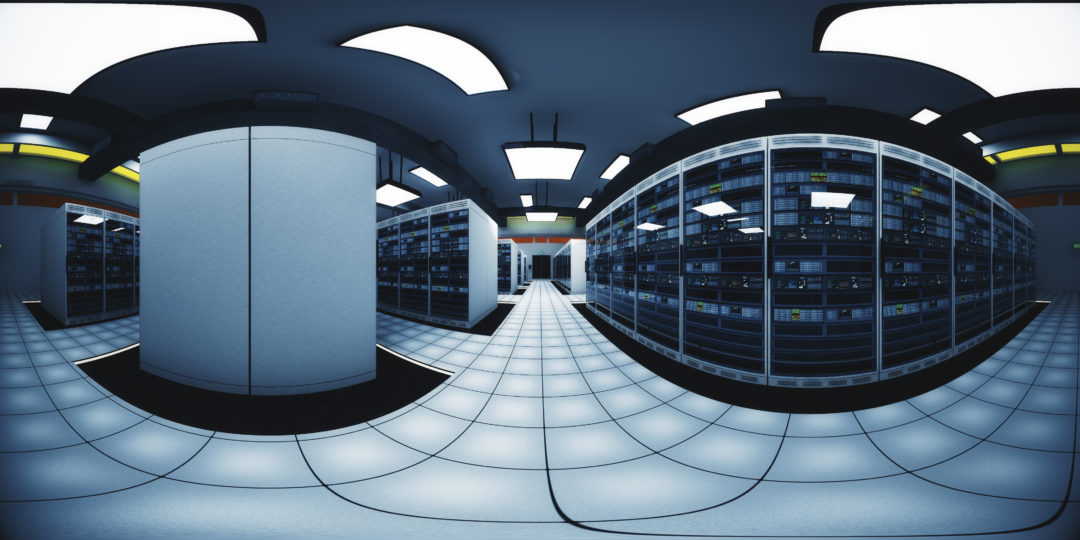As existing computing systems creak under a deluge of data, the demand for enhanced performance and superior compute capacity has increased. Innovative high performance computing (HPC) solutions are coming to the fore, empowering organisations to push the boundaries of their capabilities and enabling them to glean faster, more accurate insights from their data. The convergence of AI and HPC will take this a step further.
HPC is built to solve complex problems. It has a long history as the engine room of innovation, capable of analysing billions of pieces of data in real-time and carrying out calculations thousands of times faster than an average computer. But, as we transition to an exascale future, HPC will increasingly intertwine with AI. This is an incredible opportunity but we need to get the technology right, learning lessons from the HPC pioneers and considering next steps at the data centre level.
Taking design to the next level
AI at its simplest is romantic and super-charged data science; the ability of a machine to recognise trends and patterns in inputs from immense datasets, with workloads using algorithms as instructions so it can also learn in order to draw out deeper insights and transferable intelligence. Unsurprisingly, it is the latter point that has gripped the imagination of many.
See also: Investing in artificial intelligence: What businesses need to know – To make artificial intelligence work for a business, leaders need to ensure that employee skills are honed in line with technological investments.
HPC has traditionally been the tool by which a business can prove a design concept – for example, speeding up the development a new model of car by simulating the ways in which the manufacturing process might be disrupted if a certain metal is used on the door. It could also simulate how a crash might impact the structure of the vehicle, providing models and reports of the predicted outcomes. AI will change the dynamic of this relationship for the better. Because of AI’s ability to learn, it will one day provide feedback on the design and recommendations on what to do differently.
For now, though, we are still very much in our technological infancy. Some of the most successful examples of AI in action are still simply about a machine learning to separate images of, say, cats from elephants. That said, its potential is being recognised by many businesses eager to stay ahead of the curve, from the introduction of chatbots that can undertake sentiment analysis, to the deep analysis of complex legal contracts to identify errors and classify issues.
Understanding the capabilities and interconnections of the entire system
There’s much more to do to create the conditions for these technologies to merge successfully – a merger that will transform both in the process. This is something we’re seeing already.
HPC modeling typically applies scientific equations to a structured mesh of data points and then using a powerful computer, simulates an environment over all the points across that grid. The more points you have on the grid, the longer it takes to undertake the HPC modelling. Achieving pin-point accuracy through ultra fine precision, in particular, takes time. AI can help here, by learning new options for coarse meshes that achieve minimal error.
In doing so, it allows HPC applications to return meaningful results more quickly, reducing the HPC resources needed and speeding up the development time. And, as the AI gets smarter, the HPC gets more and more efficient.
Related: Artificial intelligence will lead to a ‘positive shift in the work people do’ – The debate around artificial intelligence and jobs won’t go away. However, the most likely outcome of AI — looking at other industrial revolutions — will be a positive shift in the nature of the work people do.
Another good, demonstrable example to illustrate how the convergence is taking place and the benefits of it happening is to consider how the technology could readily advance weather forecasting. Weather modellers typically focus on understanding environmental changes at a macro level, modelling storm systems as they move across oceans and continents. Thanks to HPC modelling and simulation, meteorologists can track and, with precision, anticipate how a hurricane will move and who will be in harm’s way as landfall looms large.
However, smaller-scale weather developments, like hail showers or tornadoes, can be impossible to predict because of the large scale modelling resolutions that are chosen to track mega storms and continental weather patterns. Adding AI to the HPC modelling and simulation workflow in these instances could accelerate discovery. AI algorithms can be used to treat the output from traditional models as a data-rich input source, learning from the simulations and spotting potential, illuminating patterns.
The AI would draw on the previous weather history data and determine smaller areas to focus on based on the patterns and correlations in the older data. In doing so, meteorologists could create focused, fine mesh weather models that are able to predict weather risks at a variety of levels and increase the value of the data that they provide as a service to others. HPC already drives value for companies the world over but by coupling AI with HPC, this value can grow to levels previously unseen.
Scalability and your data centre strategy
HPC-AI – or perhaps it would be better to call it Intelligent-HPC (I-HPC) – will undoubtedly drive a major paradigm shift in computing, data analytics and processing overall. Yet, at the data centre level, the need for a highly, optimised and secure environment – where scalability and performance are prioritised – remains unchanged. Indeed, both end-to-end high bandwidth and low latency is a must for rapidly adapt to evolving requirements of these systems.
For business, the important thing to remember is that I-HPC is computationally intensive. Evaluating the current physical HPC infrastructure of a data centre together with additional elements such as processors from a performance point of view, must be undertaken holistically, encompassing a wide range of capabilities – from software, storage to skills. In order to integrate new technologies, businesses need to understand their current technology stack in detail. And, by understanding those technologies and how they are applied, there is plenty to be gained.
Traditional HPC has historically demanded the highest integrity in terms of the data centre infrastructure. Many HPC applications are stateful applications that iterate over a set of data that is shared on blindingly fast storage platforms for the duration of the supercomputing simulation. However, AI-enabled machine learning algorithms may not require the same levels of critical performance from the underlying infrastructure.
See also: Integrating AI: Best practice tips — a CTO guide – In this guide, six CTOs and AI experts provide their best practice tips on integrating AI into internal operations and external facing products.
During the training phase of a typical DNN for example, iterative calculations can be executed on purpose-built hardware that is coupled to the specific operational standards of the supporting data centre infrastructure. When coupled with innovative low-resiliency data centre products, a business can achieve not only improved efficiency for their I-HPC applications but also dramatic cost savings.
Lessons from the previous generation
As with traditional HPC needs, there is no one-size-fits-all solution for I-HPC. But the convergence of HPC and AI and the innovation taking place stands to benefit all parties. While traditional HPC solutions have not been built with cloud in mind, AI applications are at the cutting edge; many developers are leveraging the newest DevOps tools to deliver truly federated, cloud-native applications. This is exciting.
However, it’s worth also remembering that the developers of the latest in AI technology do not have decades of experience in deploying and optimising massively parallel architectures. As AI algorithms demand more and more parallelism to achieve fast and accurate results, HPC native tools such as mpi will push AI applications further. There is little need – or indeed a business case – to develop exceptionally expensive GPU cards and the supporting custom software from scratch or on a case by case basis when these compute-intensive fundamentals have been perfected by the generation that developed supercomputers already.
Conclusion
Ultimately, the convergence of AI with HPC will transform computing systems as we know it but it’s a natural progression – with many benefits ahead. Not only will the advent of I-HPC enhance collaboration across business units, allow for experimentation and uncover capabilities at a human level, it will also improve processes and create greater agility.
Indeed, I-HPC will make it possible to address unique workloads and challenging situations faster than ever before – facilitating not just the next big discovery or strategic breakthrough, but also revolutionising the way organisations operate, learn, collaborate, and grow.
Written by Tate Cantrell, CTO, Verne Global







